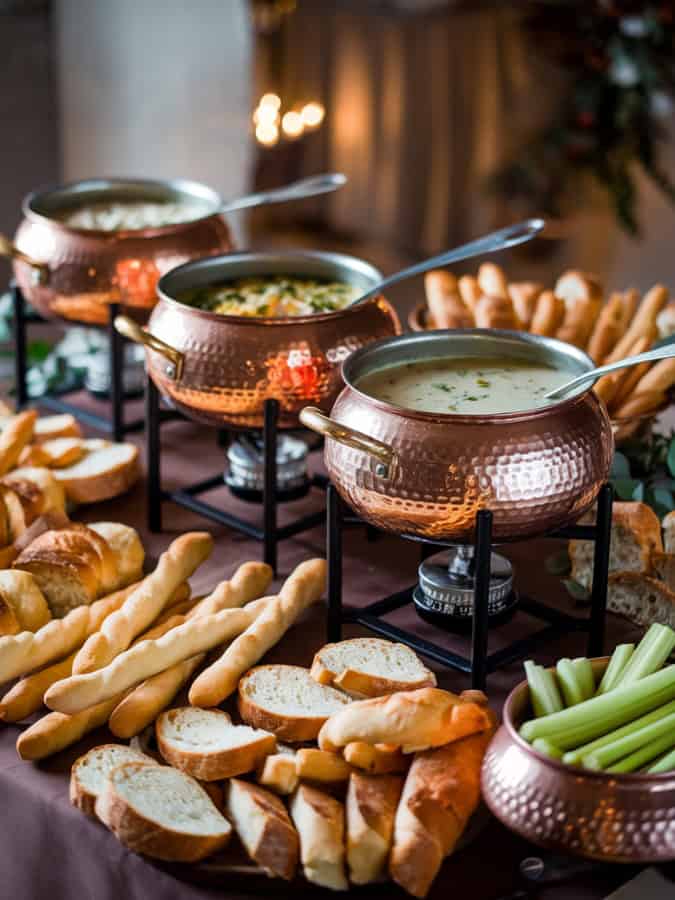When planning a wedding, catering often makes up one of the largest parts of your overall budget. Yet, despite its significance, many couples underestimate exactly what’s included—and more importantly, what’s not. This can lead to unexpected expenses and stress later on.
From deciding between your venue’s caterer or an external catering service, to understanding all the hidden fees and potential extras, it’s essential to know what you’re signing up for.
This guide will clearly explain everything you need to consider, helping you avoid budget surprises and ensuring your catering experience matches your vision seamlessly.

What’s Usually Included in Standard Catering
Standard catering packages usually cover the basics: appetizers, main courses, and desserts. You can also expect standard non-alcoholic beverages like water, coffee, tea, and soft drinks to be included. Anything beyond these essentials may involve additional charges, so always confirm the details clearly with your caterer.
Venue Catering vs. External Caterers: Which is Right for You?
Choosing between your venue’s catering services or bringing in external caterers can greatly influence your budget and the overall feel of your event.
Venue Caterers
Venue caterers offer convenience and sometimes bundled discounts, making them a cost-effective choice. However, you might face limitations in menu customization or specific preferences.
External Caterers
External caterers provide more flexibility, ideal if you’re aiming for a tailored menu or unique culinary experience. Just keep in mind that some venues might charge additional fees for outside caterers, including costs for kitchen usage, setup, and cleanup. Asking about these potential fees early in your planning process will prevent budget surprises later.
Popular Catering Add-ons Worth Considering
Many couples choose additional catering upgrades to enhance their guests’ experience. Enhanced beverage options, dining style upgrades, and specialty food displays can significantly elevate your celebration but usually come with additional costs. Consider options that best reflect your priorities and overall wedding vision.
Understanding Staffing and Service Costs
Basic staffing, including servers, bartenders, and chefs, is typically part of your catering package, but the exact details vary. Plated dinners or specialized stations usually require more staff, potentially affecting costs. It’s also important to differentiate between mandatory service charges and optional gratuities for staff, clarifying both clearly with your caterer.
Equipment and Rental Considerations
Basic catering packages typically include standard tableware, basic linens, and glassware. Upgrades like specialty linens, unique plates, or additional furniture usually incur extra fees. Always clarify exactly what’s provided and what you’ll need to rent separately to avoid last-minute surprises.
Managing Special Dietary Requests
Accommodating dietary restrictions or special menu requests often involves additional costs. Discuss these needs clearly and early. Gathering dietary preferences from guests well in advance helps streamline the process and may help reduce additional charges.
Understanding Fees & Taxes Clearly
Ensure your catering contract explicitly outlines all taxes and administrative fees, as these can significantly impact your total cost. Getting a detailed breakdown upfront prevents any confusion or unexpected increases in your final bill.
Hidden Costs to Keep in Mind
Watch out for overlooked charges like corkage fees (for bringing your own alcohol), cake cutting charges, or overtime staffing costs. Clearly addressing and documenting these potential fees in your contract helps minimize surprises later.
Real-Life Example of a Wedding Catering Budget
To give you a clear picture of typical catering costs, here’s a realistic example of an actual wedding budget breakdown:
The couple chose a venue offering an in-house catering package at $85 per guest, covering appetizers, plated main courses, desserts, and standard non-alcoholic beverages for 120 guests (totaling $10,200). They also opted for several add-ons:
- Open bar with premium selections of wine, beer, and signature cocktails: $3,500
- Special dietary accommodations (vegan, gluten-free, allergy-friendly meals): $250
- Cake cutting and plating service fee: $100
- Additional staffing hours due to extended reception time: $600
- Specialty linens and upgraded glassware rentals: $500
- Venue administrative and service fees (typically 20% of food and beverage costs): $2,740
- Sales tax (8% on total food, beverage, and service fees): $1,315
These additions brought their total catering budget to approximately $19,205.
This real-life scenario illustrates how quickly additional costs can add up, making clear communication and budgeting critical.
Practical Advice for Managing Your Catering Budget
The key to staying within your catering budget is clear communication and proactive planning. Request detailed, itemized quotes from caterers, clearly discuss expectations in consultations, and diligently track expenses in your budget spreadsheet. This strategy ensures you maintain full control of your spending.
Wedding Catering True Costs
Avoid catering budget surprises by prioritizing clear communication, careful planning, and detailed documentation of every agreement. Thoughtful decision-making and transparency with your caterer will help create an enjoyable catering experience that fits seamlessly within your wedding vision and budget.
More blogs you will love!
- Mastering Your Wedding Budget in only 7 steps
- Budget-Friendly Fall Wedding Ideas for Modern Couples
- The True Cost of Wedding Catering: What’s Included & What’s Not
- Wedding Budget Hacks That Actually Work (And 5 That Don’t!)
- Wedding Budget Mistakes That Cost Couples Thousands (And How to Avoid Them!)
- 48 Hidden Wedding Costs You’ve Probably Forgotten to Budget For
- Budget-Friendly Save the Date Ideas Under $2
- 21 Winter Wedding Ideas on A Budget
- How Much of My Budget Should I Really Be Spending on My Venue?










